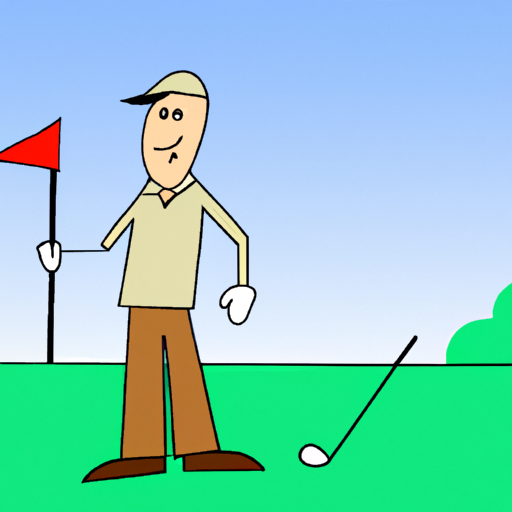- Home
- Hitting Irons
- Where to Aim When Hitting Irons
Mastering Iron Shots: The Weekend Golfer's Guide to Precision and Power
Are you constantly grappling with the uncertainty of where to aim when hitting irons? As a weekend golfer, I've been there, navigating the perplexing world of iron shots. This guide is your beacon, illuminating the path to precision and power in your game. In just a few sentences, you'll embark on a journey through strategic aiming techniques, common mistakes, and advanced tips, all centered around that crucial question: where to aim when hitting irons. Whether you're in a hurry or have time to delve deep, our key takeaways and FAQs at the bottom offer a quick snapshot to elevate your game. Let's unlock the secrets together and transform your golfing experience!
Hey there, fellow golfer!
Are you tired of inconsistent iron shots ruining your round? Do you dream of confidently stepping up to the ball, knowing exactly where to aim and how to hit it? You're not alone. As a weekend golfer myself, I've faced the same struggles. But here's the good news: mastering your iron shots is not as elusive as it seems.
Hitting irons effectively is a common challenge for many golfers. Whether it's misjudging distances, struggling with alignment, or simply not knowing where to aim, these issues can significantly impact your game.
I remember the frustration of watching my ball veer off course, despite feeling like I had made a good swing. It's not just about the embarrassment of a bad shot; it's about the strokes it adds to your score and the enjoyment it takes away from your game.
That's why I've put together this comprehensive guide. Drawing from my own experiences and the wisdom of golfing experts, I'll walk you through everything you need to know about where to aim when hitting irons. From understanding the basics to implementing advanced strategies, this guide is designed to transform your iron play, making you a more confident and successful golfer.
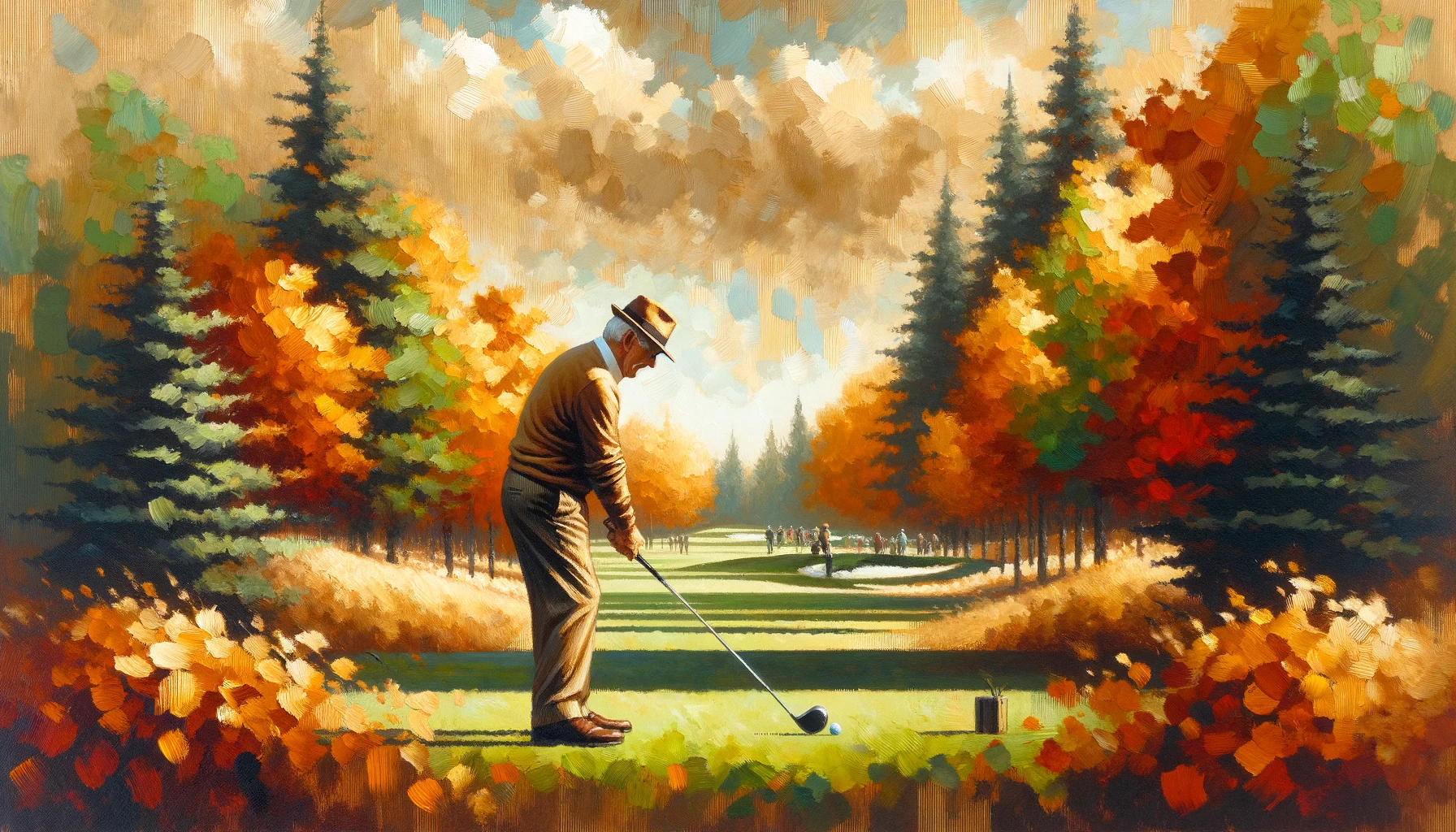 Discover the Art of Precision in Iron Shots
Discover the Art of Precision in Iron ShotsUnderstanding Iron Play: The Foundation of Precision Golfing
1. The Role of Irons in Your Golf Bag: Irons are the workhorses of your golf bag, crucial for a variety of shots. Understanding the specific purpose of each iron is the first step to mastering them. For instance, lower-numbered irons (like a 3 or 4-iron) are designed for longer shots, while higher-numbered irons (like a 9-iron or pitching wedge) are used for shorter, more precise shots.
2. Grip and Stance Basics: Before we even talk about aiming, let's get the basics right. A proper grip and stance are foundational for a good iron shot. Ensure your grip is firm yet relaxed, and your stance is balanced with your feet shoulder-width apart.
3. The Importance of Ball Position: Ball position varies with different irons. For long irons, position the ball towards the inside of your front foot. As you move to shorter irons, gradually move the ball back in your stance. This adjustment is crucial for achieving the right trajectory and distance.
4. Visualizing Your Shot: Visualization is a powerful tool. Before each shot, take a moment to visualize the ball's flight path. Where do you want it to land? How will it get there? This mental imagery can significantly improve your focus and execution.
5. Choosing Your Target: When aiming, don't just focus on the flag. Choose a specific, smaller target, like a patch of grass or a tree in the distance. This precision in aiming will translate to more accurate shots.
6. Adjusting for Wind and Slope: Golf isn't played in a vacuum. Always consider environmental factors like wind direction and slope. These can drastically affect where you should aim and how you hit the ball.
7. Club Selection: Choosing the right club is more than just distance. Consider the shot's required height, the wind, and the course's layout. Sometimes, a well-hit 7-iron is better than a strained 6-iron.
8. Practice Makes Perfect: There's no substitute for practice. Spend time at the range working on your iron shots. Experiment with different ball positions, targets, and clubs to understand how each variable affects your shot.
9. My Experience: I'll never forget the day I finally understood the importance of aiming. I was playing a challenging par-3, and my usual strategy wasn't working. Frustrated, I decided to change my approach. Instead of aiming directly at the flag, I chose a spot ten yards left of it, accounting for the wind. To my amazement, the ball landed beautifully on the green, setting up an easy putt. It was a lightbulb moment that changed my game forever.
10. Conclusion: Understanding the basics of iron play sets the foundation for improved accuracy and consistency. Remember, good iron shots start long before you swing. It's about preparation, visualization, and smart decision-making.
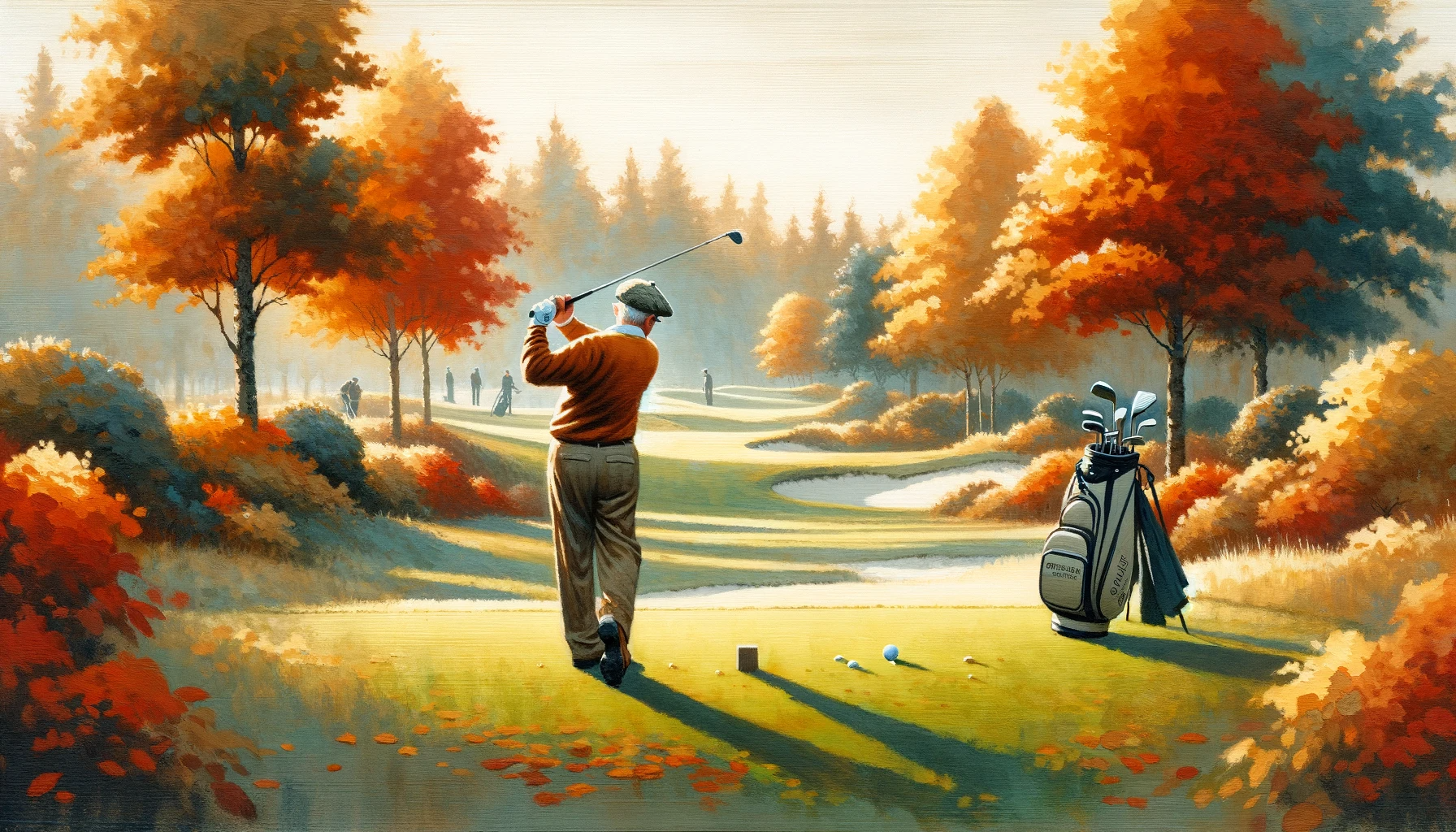 Perfect Your Iron Shots with Focused Stance and Grip
Perfect Your Iron Shots with Focused Stance and GripStrategic Aiming Techniques: Maximizing Accuracy with Every Iron
1. The Art of Precision Aiming: When it comes to hitting irons, precision is key. It's not just about aiming at the target but understanding how to use your irons to shape the shot. For instance, with a 7-iron in hand, I always consider the shot's curve. If I'm hitting a draw, I aim slightly right of my target, allowing the ball's natural flight to bring it back.
2. Aligning Your Body Correctly: Alignment is crucial and often overlooked. Your feet, hips, and shoulders should be parallel to the target line. I use a simple trick: I lay a club on the ground, pointing towards my target, and align my feet along it. This small adjustment can significantly improve accuracy.
3. Distance Control: Understanding the distance each iron can cover is vital. I keep a chart in my golf bag that lists the average distance I hit with each iron. This helps in making quick, informed decisions on the course.
4. Using Landmarks for Aiming: Sometimes, the target isn't visible from where you're hitting. In such cases, use a landmark in line with your target, like a tree or a bunker, as your aiming point. This technique has saved me countless strokes on blind shots.
5. Adjusting for Lie: The lie of the ball greatly affects your shot. A ball above your feet will likely hook, while a ball below your feet tends to slice. Adjust your aim accordingly. I learned this the hard way when I played a shot from an uphill lie without adjusting my aim and missed the green entirely.
6. Clubface Control: The direction of your clubface at impact is critical. A slightly open clubface can send the ball veering right, and a closed face will pull it left. Regularly check your grip and clubface alignment during practice sessions to develop consistency.
7. Practicing Different Shot Shapes: Don't just practice straight shots. Experiment with fades, draws, and even intentional slices and hooks. This versatility will give you more options on the course. I spend hours at the range practicing different shot shapes, which has immensely improved my on-course performance.
8. Mental Approach: Confidence plays a big role. Before each shot, I take a deep breath and affirm my ability to hit the target. A positive mindset can often be the difference between a great shot and a missed opportunity.
9. Course Management: Smart course management involves knowing when to be aggressive with your aiming and when to be conservative. For instance, if there's a hazard on the right, it's wise to aim left, even if it means a longer putt.
10. Conclusion: Strategic aiming with irons involves a blend of technical skills and mental strategy. By aligning your body correctly, understanding distances, adjusting for lie, and practicing various shot shapes, you can significantly improve your accuracy with irons. Remember, every shot is an opportunity to demonstrate your skill and strategy.
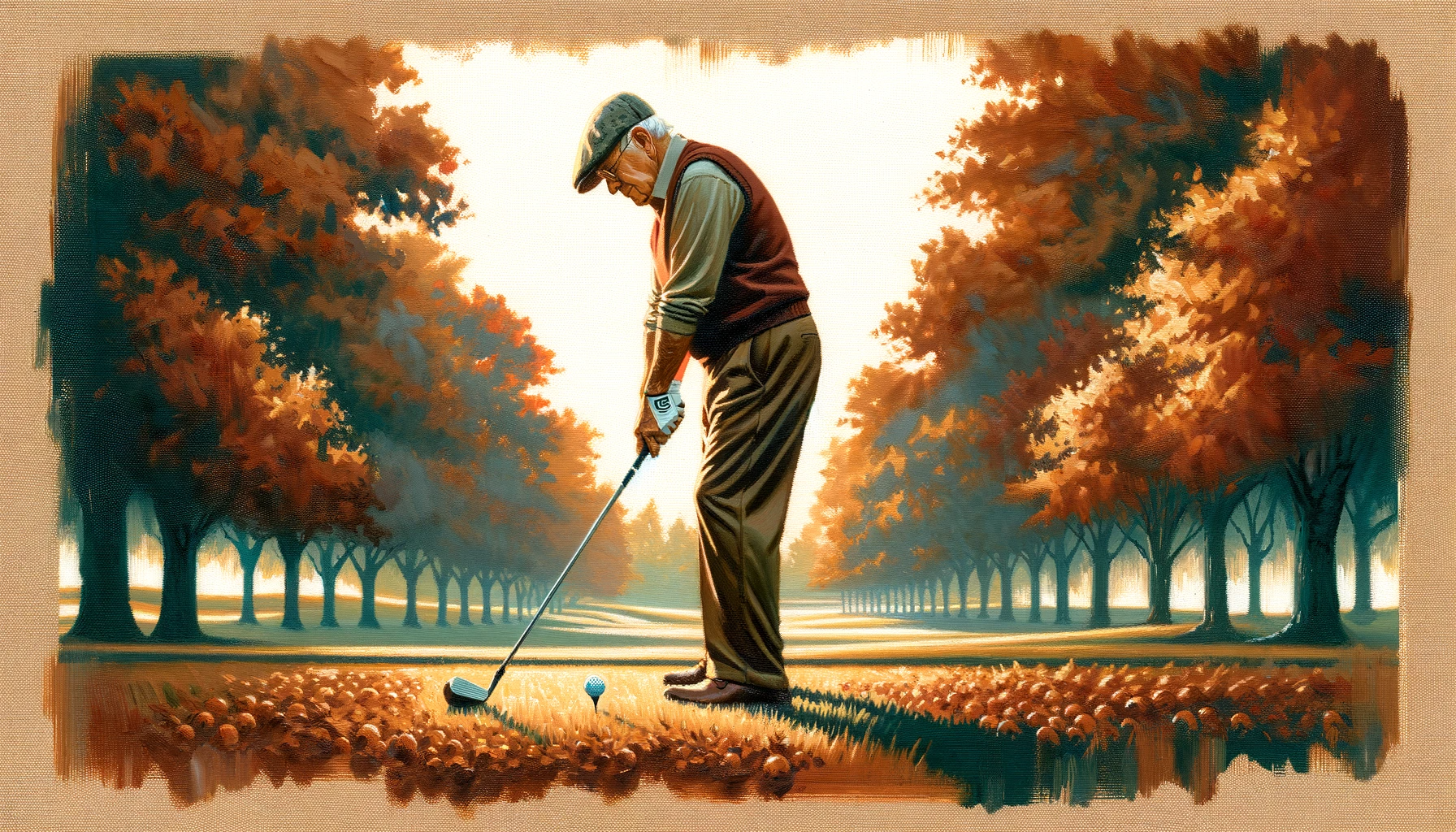 Experience the Harmony of Golf and Nature in Your Iron Shots
Experience the Harmony of Golf and Nature in Your Iron ShotsCommon Mistakes and Corrections: Enhancing Your Iron Game
1. Identifying Common Iron Shot Mistakes: As a golfer, I've seen and made my fair share of errors with iron shots. One of the most common mistakes is incorrect ball positioning. Many golfers, especially beginners, tend to play the ball too far forward or too far back in their stance, leading to either fat or thin shots.
2. Correcting Ball Position: The key to correcting this is understanding the ideal ball position for each iron. For long irons, position the ball near your front heel. As you move to shorter irons, gradually move the ball towards the center of your stance. This adjustment ensures better contact and more consistent shots.
3. Over-Swinging Issues: Another frequent error is over-swinging. Trying to hit the ball too hard often leads to loss of balance and control. I remember a round where I consistently over-swung, resulting in erratic shots. The solution? Focus on a smooth, controlled swing with a tempo that allows you to maintain balance.
4. Improving Grip and Posture: A poor grip or incorrect posture can also lead to issues. Ensure your grip is neither too tight nor too loose and maintain a posture that's relaxed yet athletic. Regularly check these fundamentals, as they are easy to overlook but critical for consistent iron play.
5. Adjusting for Wind and Elevation: Failing to account for wind direction and elevation changes is a common oversight. If you're playing into the wind, use a club with more loft and swing easier to reduce spin. For downhill shots, choose a club that one less than you would normally use, as the ball will travel further.
6. Club Selection Strategy: Choosing the wrong club is a mistake I've seen many golfers make. It's not just about distance; consider the shot's required trajectory and any hazards around the green. Sometimes, it's better to play safe with a club that ensures you'll make the green, rather than risk missing it with a longer club.
7. Avoiding Mental Blocks: Mental blocks can also affect your iron game. Don't let a bad shot ruin your confidence. Each shot is a new opportunity. I've learned to shake off bad shots quickly and focus on the next one, which has significantly improved my mental game.
8. Practice Drills for Consistency: Practice is essential for iron shot consistency. Use drills that focus on ball striking, such as hitting balls with your feet together to improve balance. I often practice this drill, and it has greatly enhanced my ball striking ability.
9. Seeking Professional Advice: Don't hesitate to seek advice from a golf pro. A few lessons can go a long way in correcting common mistakes and improving your overall iron play.
10. Conclusion: Enhancing your iron game involves recognizing and correcting common mistakes. By focusing on proper ball positioning, maintaining a controlled swing, adjusting for environmental factors, and practicing regularly, you can significantly improve your accuracy and consistency with irons. Remember, every golfer makes mistakes, but the key is to learn from them and keep improving.
Advanced Tips and Drills: Taking Your Iron Shots to the Next Level
1. Leveraging Advanced Techniques: Once you've mastered the basics, it's time to elevate your iron game with advanced techniques. One game-changer for me was learning to control shot trajectory. By adjusting my grip and stance slightly, I could hit lower shots into the wind or higher shots to clear obstacles.
2. Drills for Trajectory Control: Practice drills that focus on trajectory. For lower shots, move the ball back in your stance and choose a club with less loft. For higher shots, do the opposite. Spend time at the range experimenting with these adjustments to understand how they affect your shot.
3. Fine-Tuning Distance Control: Distance control is crucial for precision iron play. A useful drill is the "ladder drill" where you hit successive shots with the same club but try to carry each one a bit further than the last. This drill has significantly improved my ability to judge distances.
4. Playing with Spin: Adding spin to your iron shots can be a powerful tool. To increase backspin, strike the ball with a descending blow and ensure your clubface is clean for maximum friction. I remember playing a par-3 over water where backspin saved me from rolling off the back of the green.
5. Course Management Strategies: Advanced iron play also involves smart course management. Analyze each hole and plan your shots. Sometimes, it's better to aim for the widest part of the green rather than directly at the pin, especially if there are hazards nearby.
6. Mental Toughness in Iron Play: Mental toughness is key. I always remind myself that even the best golfers hit bad iron shots. The difference is in how they recover. Stay positive and focused, and don't let one bad shot affect the next.
7. Utilizing Technology: Modern technology like launch monitors can be incredibly helpful. They provide data on your swing speed, ball speed, spin rate, and more, which can be invaluable in fine-tuning your iron play.
8. Personal Reflection on Course Strategy: I once played a course with notoriously small greens. Instead of aiming directly for the flag, I focused on hitting the center of the green to avoid the risk of missing the green entirely. This strategy paid off, and I ended up with more birdie opportunities.
9. Staying Updated with Equipment: Ensure your irons are suited to your game. Technology in clubs evolves, and having the right set can make a significant difference. I recently upgraded my irons, and the improvement in my game was immediate and noticeable.
10. Conclusion: Advancing your iron play involves a combination of technical skill, mental strategy, and continuous learning. By practicing advanced techniques, focusing on course management, and utilizing technology, you can take your iron shots to new heights. Remember, the journey to better golf is ongoing, and there's always room for improvement.
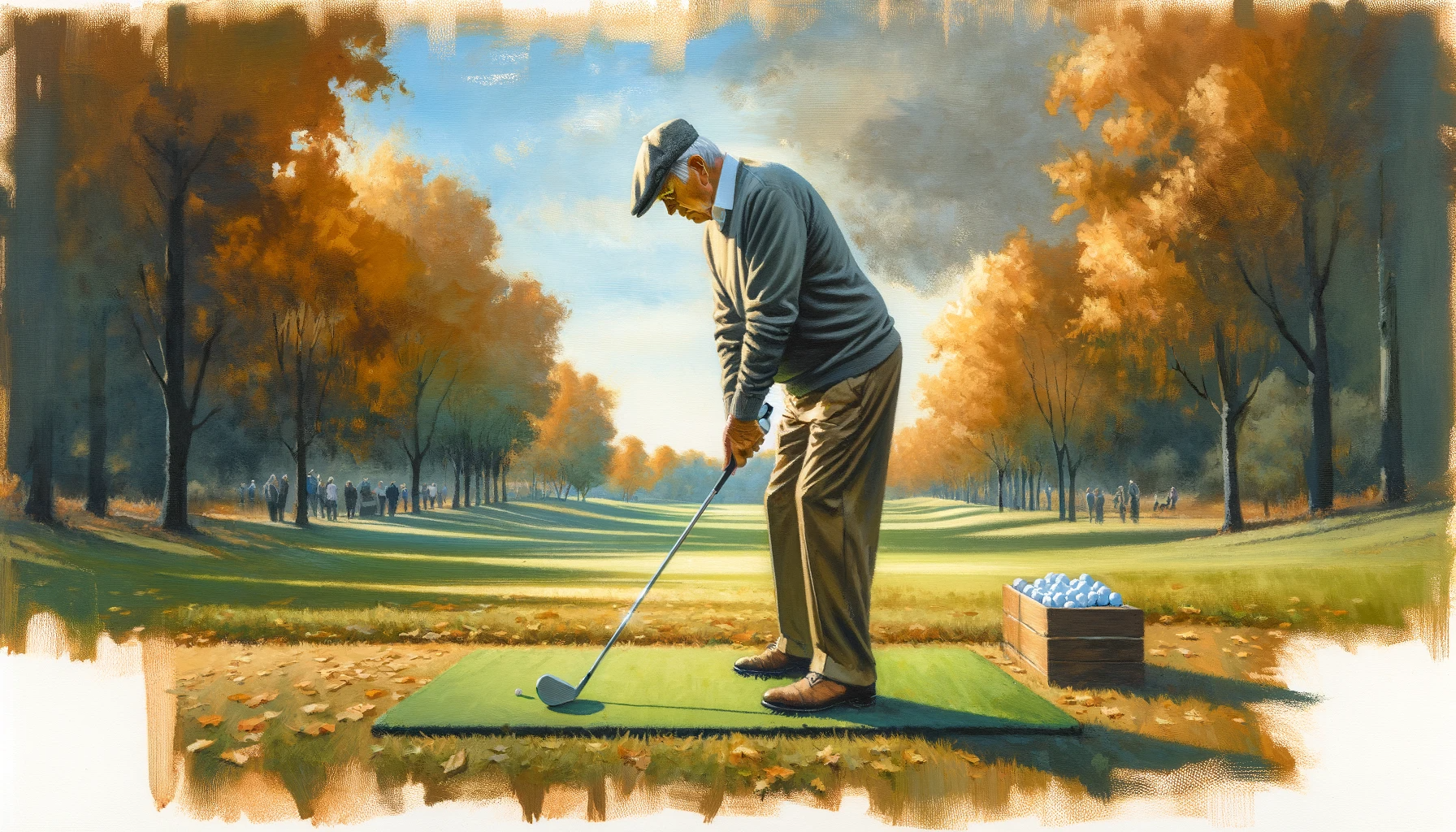 Elevate Your Game with Timeless Iron Shot Techniques
Elevate Your Game with Timeless Iron Shot TechniquesKey Takeaway: Aiming Mastery with Irons
As we wrap up this comprehensive guide on where to aim when hitting irons, let's boil it down to some actionable steps you can take to elevate your game:
- Understand Each Iron's Purpose: Familiarize yourself with the range and trajectory of each iron in your bag.
- Perfect Your Stance and Grip: Regularly check and adjust your grip and stance for optimal alignment and balance.
- Master Ball Positioning: Practice different ball positions for various irons to ensure clean, accurate shots.
- Visualize and Aim Precisely: Always visualize the shot before swinging and choose specific, smaller targets for better accuracy.
- Adapt to Environmental Factors: Adjust your aim and club selection based on wind, slope, and course layout.
- Practice Different Shot Shapes: Experiment with draws, fades, and other shot shapes to enhance your versatility on the course.
- Embrace Advanced Techniques: As you progress, incorporate advanced strategies like controlling shot trajectory and spin.
- Stay Mentally Tough: Maintain a positive attitude and resilience, especially after a poor shot.
- Leverage Technology and Equipment: Use modern tools and ensure your irons are well-suited to your playing style.
Now, it's your turn to take these insights to the golf course. Remember, the journey to becoming a master with your irons is a blend of knowledge, practice, and mental fortitude.
Engage with the Golfeaser Community: We're not just about tips and techniques; we're about sharing stories, triumphs, and challenges. Join the Golfeaser community, share your experiences, and learn from fellow golf enthusiasts. Sign up for our newsletter to stay updated with the latest insights and stories. Live by the Golfeaser Manifesto, and let's change the world one round at a time.
So, are you ready to take your iron game to the next level and impress your buddies on the course? What specific aspect of your iron play are you going to focus on improving first? Share your goals and stories with us, and let's embark on this journey together. Remember, every round is an opportunity to grow, both as a golfer and as a person. Let's tee it up and make every shot count!
Comprehensive FAQ on Where to Aim When Hitting Irons
What is the ideal ball position for iron shots?
What is the ideal ball position for iron shots?
The ideal ball position varies with the type of iron you're using. For long irons, position the ball closer to your front foot, and as you move to shorter irons, gradually move the ball towards the center of your stance. This ensures optimal loft and control.
How does club selection impact where I should aim?
How does club selection impact where I should aim?
Club selection is crucial in determining where to aim. Different irons have varying degrees of loft and distance capabilities. Choose your club based on the distance to the target and the type of shot you need to make, considering factors like wind and hazards.
What role does visualization play in iron shot aiming?
What role does visualization play in iron shot aiming?
Visualization is a powerful tool in golf. Before taking your shot, visualize the trajectory and landing spot of the ball. This mental imagery helps in aligning your body correctly and executing the shot with more precision.
How should I adjust my aim for different environmental conditions?
How should I adjust my aim for different environmental conditions?
Adjust your aim based on factors like wind direction, slope, and course layout. For instance, aim slightly left or right to compensate for crosswinds, and consider the slope of the ground, which can affect the ball's path after landing.
What are some common aiming mistakes with irons and how can I correct them?
What are some common aiming mistakes with irons and how can I correct them?
Common mistakes include misaligning the body, incorrect ball positioning, and not accounting for environmental factors. Correct these by practicing proper stance and alignment, understanding the ideal ball position for each iron, and being mindful of the course conditions.
How can I practice improving my aim with irons?
How can I practice improving my aim with irons?
Practice at a driving range or during practice rounds. Focus on drills that enhance your understanding of ball positioning, club selection, and shot visualization. Experiment with different shot shapes and trajectories to gain a better feel for aiming in various situations.
Can technology help in improving where to aim with irons?
Can technology help in improving where to aim with irons?
Yes, technology like launch monitors can provide valuable feedback on your shots, including data on angles, spin, and distance. This information can be used to refine your aiming techniques and club selection.
What advanced techniques can I learn to improve my iron aiming?
What advanced techniques can I learn to improve my iron aiming?
Advanced techniques include learning to control shot trajectory, understanding how to add spin, and mastering different shot shapes like draws and fades. These skills allow for more precise aiming and adaptability on the course.
How important is mental strategy in aiming iron shots?
How important is mental strategy in aiming iron shots?
Mental strategy is crucial. Confidence, focus, and a positive mindset can significantly impact your aiming and overall performance. Mental toughness helps in recovering from bad shots and maintaining consistency throughout your round.
Where can I find more resources to improve my iron shot aiming?
Where can I find more resources to improve my iron shot aiming?
Consider taking lessons from a golf pro, reading instructional books, watching tutorial videos, and engaging in online golf communities. Continuous learning and seeking advice from experts can greatly enhance your understanding and execution of iron shots.





